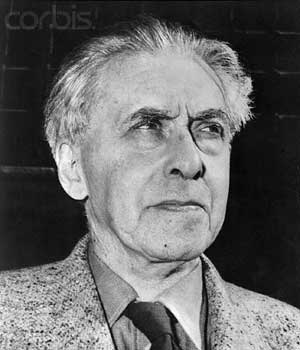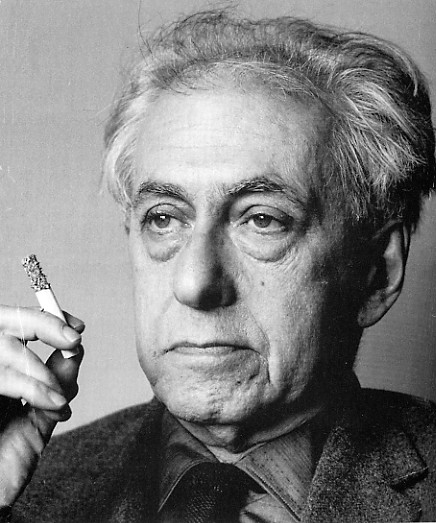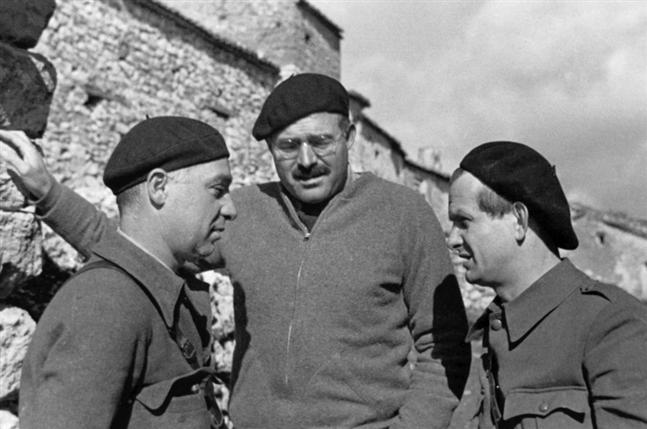<Back to Index>
- Physician Thomas Willis, 1621
- Writer Ilya Grigoryevich Ehrenburg, 1891
- Fleet Admiral Tōgō Heihachirō, 1848
PAGE SPONSOR


Ilya Grigoryevich Ehrenburg (Russian: Илья Григорьевич Эренбург; Kiev, January 27 [O.S. January 15] 1891 – Moscow, August 31, 1967) was a Soviet writer and journalist.
Ehrenburg
is among the most prolific and notable authors of the Soviet Union; he
published around one hundred titles. He became known first and foremost
as a novelist and a journalist - in particular, as a reporter in three
wars (First World War, Spanish Civil War and the Second World War). His articles on the Second World War have provoked intense controversies in West Germany, especially during the sixties. The novel The Thaw gave its name to an entire era of Soviet cultural politics, namely, the liberalization after the death of Joseph Stalin. Ehrenburg's travel writing also had great resonance, as did to an arguably greater extent his autobiography People, Years, Life, which may be his best known and most discussed work. The Black Book, edited by him and Vassily Grossman,
has special historical significance; detailing the genocide on Soviet
citizens of Jewish ancestry, it is the first great documentary work on
the Holocaust. In addition, Ehrenburg wrote a succession of works of poetry.
Ilya Ehrenburg was born in Kiev, Russian Empire, in a bourgeois family; his father was an engineer. Ehrenburg's family was not religiously affiliated; he came into contact with the religious practices of Judaism - originally the religion of the Ehrenburgs - only through his maternal grandfather. Ehrenburg never joined any religious denomination, in spite of his later flirtation with Catholicism. He learned no Yiddish, and understood himself as a Russian, and later as a Soviet citizen, while taking strong public positions against antisemitism. He wrote in Russian even during his many years abroad. When Ehrenburg was four years old, the family moved to Moscow, where his father had been hired as director of a brewery. At school, he met Nikolai Bukharin, who was two grades above him; the two remained friends until Bukharin's death during the Great Terror of 1938.
In the aftermath of the Russian Revolution of 1905, both Ehrenburg and Bukharin got involved in illegal activities of the Bolshevik organisation. In 1908, when Ehrenburg was seventeen years old, the tsarist secret police (Okhrana) arrested him for five months. He was beaten up and lost some teeth. Finally he was allowed to go abroad and chose Paris for his exile.
In Paris, he started to work in the Bolshevik organisation, meeting Lenin and other prominent exiles. But soon he left these circles and the Communist Party. Ehrenburg became attached to the bohemian life in the Paris quarter of Montparnasse. He began to write poems, regularly visited the cafés of Montparnasse and got acquainted with a lot of artists, especially Pablo Picasso, Diego Rivera, and Amedeo Modigliani. Foreign writers whose works Ehrenburg translated included those of Francis Jammes.
During the First World War, Ehrenburg became a war correspondent for a St. Petersburg newspaper. He wrote a series of articles about the mechanized war that later on were also published as a book ("The Face of War"). His poetry now also concentrated on subjects of war and destruction, as in "On the Eve", his third lyrical book. Nikolai Gumilev, a famous symbolistic poet, wrote favourably about Ehrenburg's progress in poetry.
In 1917, after the revolution, Ehrenburg returned to Russia. At that time he tended to oppose the Bolshevik policy, being shocked by the constant atmosphere of violence. He wrote a poem called "Prayer for Russia" which compared the storm of the winter palace to a rape. In 1920 Ehrenburg went to Kiev where he experienced four different regimes in the course of one year: the Germans, the Cossacks, the Bolsheviks, and the White Army. After antisemitic pogroms, he fled to Koktebel on the Crimea peninsula where his old friend from Paris days, Maximilian Voloshin, had a house. Finally, Ehrenburg returned to Moscow, where he soon was arrested by the Cheka.
He wrote modernistic novels popular in the 1920s, often set in Western Europe ("Julio Jurenito", "Thirteen Pipes"). Ehrenburg continued to write philosophical poetry, using more freed rhythms than in the 1910s.
By
the 1930s, as a friend of many of the European Left, Ehrenburg was
frequently allowed by Stalin to visit Europe and to campaign for peace
and socialism. In 1939, he was a war journalist in the Spanish civil war.
Ehrenburg was active in war journalism throughout WWII. As a consequence, he is one of many Soviet writers, along with Konstantin Simonov and Aleksey Surkov, who have been by some accused of "[lending] their literary talents to the hate campaign" against Germans during World War II. His article "Kill" published in 1942 — when German troops were deeply within Soviet territory — became a widely publicized example of this campaign, along with the poem "Kill him!" by Simonov. In "Kill", Ehrenburg wrote:
"Here are excerpts from three letters found on dead Germans. Inspector Reinhardt wrote to Lieutenant Otto Schirach: "[...] I have found six Russians in the area. They last far longer than Frenchmen. Only one of them has died. [...] Their upkeep costs nothing and we must not tolerate that these animals, whose children are possibly killing our children right now, get to eat German bread. Yesterday I whipped lightly two Russian beasts who secretly drunk up skim milk meant for pigs [...]" A certain Otto Essmann wrote to Lieutenant Helmut Wiegand: "We now have some Russian prisoners of war. These fellows feed on worms by the airstrip and throw themselves at buckets of dirty water. I have seen them eating weeds. It is hard to believe that these are human beings..." Slavers - they would like to enslave our people. They take some Russians home, mistreat them, make them lose their wits by hunger, to the point that they eat grass and worms, and then a repulsive German with a stinking cigar can philosophise: "Are these perhaps human beings?" We know everything. We remember everything. We have understood: Germans are not human beings. Henceforth the word German means to us the most terrible curse. From now on the word German will trigger your rifle. We shall not speak any more. We shall not get excited. We shall kill. If you have not killed at least one German a day, you have wasted that day. If you think that instead of you, the man next to you will kill him, you have not understood the threat. If you do not kill the German, he will kill you. If you cannot kill your German with a bullet, kill him with your bayonet. If there is calm on your part of the front, if you are waiting for the fighting, kill a German before combat. If you leave a German alive, the German will hang a Russian and rape a Russian woman. If you kill one German, kill another - there is nothing more amusing for us than a heap of German corpses. Do not count days; do not count miles. Count only the number of Germans you have killed. Kill the German - this is your old mother's prayer. Kill the German - this is what your children beseech you to do. Kill the German - this is the cry of your Russian earth. Do not waver. Do not let up. Kill."
Soviet officers like Lev Kopelev, who opposed such rhetoric, were accused of opposing Ehrenburg and "compassion towards the enemy". Ehrenburg himself was criticised by Georgy Aleksandrov in a Pravda article in April 1945, who called his views towards the Germans simplificating and an exaggeration as it has never been the purpose of Soviet policy to wipe out the German people. Ehrenburg fell in disgrace at that time and it is estimated that Aleksandrov's article was a signal of change in Stalin's policy towards Germany.
When Ehrenburg received letters from frontline soldiers accusing him of having changed his position and of standing for softness towards Germans, he replied he had not changed his position, as he had always stood for "justice, not revenge". Already in May 1942 he wrote: "The German soldier with weapon in hand is not a man for us, but a fascist. We hate him [...] When the German soldier gives up his weapon and surrenders, we will not touch him with a finger - he will live."
Ehrenburg was a prominent member of the Jewish Anti-Fascist Committee.
In 1942 Ehrenburg was a companion to Leland Stowe, an American journalist who traveled to Soviet front lines. In his book They Shall Not Sleep published in the USA in 1944 Stowe describes his interaction with Ehrenburg.
In 1954, Ehrenburg published a novel titled The Thaw that tested the limits of censorship in the post-Stalin Soviet Union. It described a corrupted and despotic factory boss (a "little Stalin"). The boss's wife could not bear to stay with him and left the despot during the spring thaw that gave her courage. In August 1954, Konstantin Simonov attacked The Thaw in articles published in Literaturnaya gazeta, arguing that such writings are too dark and do not serve the Soviet state. The novel gave its name to the Khrushchev Thaw. Just prior to publishing the book, however, Ehrenburg received the Stalin Peace Prize in 1952.
Ehrenburg
is well known for his writing, especially his memoirs ("People, Years,
and Life"), which contain many portraits of interest to literary
historians and biographers. In this book Ehrenburg was the first legal
Soviet author to mention positively a lot of names banned under Stalin,
including the one of Marina Tsvetaeva. He was also active in publishing the works by Osip Mandelstam when the latter had been posthumously rehabilitated but still largely unacceptable for censorship. Together with Vasily Grossman, Ehrenburg edited The Black Book that contains documentary accounts by Jewish survivors of the Holocaust in
the Soviet Union and Poland. Ehrenburg was also active as a poet till
his last days, depicting the events of World War II in Europe, the
Holocaust and the destinies of Russian intellectuals. Ehrenburg's
memoirs were criticized by the more conservative faction among the
Soviet writers, concentrated around the journal Oktyabr'. For example, as the memoirs were published, Vsevolod Kochetov reflected on certain writers who are “burrowing in the rubbish heaps of their crackpot memories.”
Ehrenburg died in 1967 of prostate and bladder cancer, and was interred in Novodevichy Cemetery in Moscow, where his gravestone is adorned with a reproduction of his portrait drawn by his friend Pablo Picasso.
